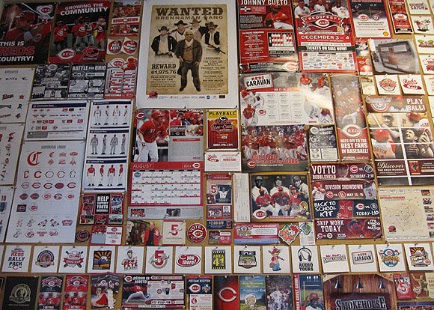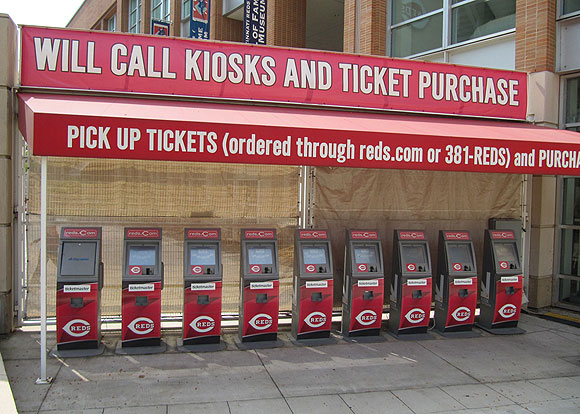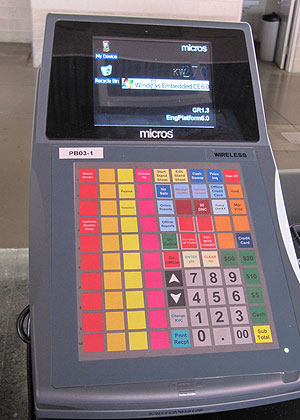Take me out to the ballgame……
Posted By Jeff Wettlaufer
Technical Program Manager
 When we talk about Intelligent Systems, we speak about connecting sensors and smart devices through intuitive applications to cloud services. Whether this fabric is lowering the cost of manufacturing for your next car, helping your family doctor prescribe you the right medicine, or making your next shopping experience better, Microsoft technology is in the DNA of the effort. Sometimes, it even effects your day out at the ballpark.
When we talk about Intelligent Systems, we speak about connecting sensors and smart devices through intuitive applications to cloud services. Whether this fabric is lowering the cost of manufacturing for your next car, helping your family doctor prescribe you the right medicine, or making your next shopping experience better, Microsoft technology is in the DNA of the effort. Sometimes, it even effects your day out at the ballpark.
Most of us think of pro sports stadium experiences from our childhood. Mine was in Edmonton watching the Oilers of the 80’s in mullets and tube skates. The arena was loud. We kept up with the game using a hard copy program in our laps and the few light bulb boards around the rink that showed the score, some out of town info every now and then but not much more. Not much technology in place. Anywhere.
Today’s kids have it a little different. With the kids back in school, those warm summer nights slowly disappearing into cooler evenings and the trees changing color, our thoughts turn to the autumn. Football coverage takes over the TV networks, and the baseball season heads for the playoffs.
 Last week we highlighted an article about Great American Ball Park in Cincinnati, home of the MLB Reds. For those of you who are technology _and_ sports fans, this is the perfect mix.
Last week we highlighted an article about Great American Ball Park in Cincinnati, home of the MLB Reds. For those of you who are technology _and_ sports fans, this is the perfect mix.
Brian Keys, the VP of technology systems for the Reds commented fans don’t realize how much technology surrounds them at a game in Great American Ball Park. From the point of ticket purchase, right through to buying beers and hot dogs inside the stadium, the Cincinnati Reds have invested heavily in the Microsoft stack, to make your visit to the game absolutely awesome. I’ll admit, I had no idea there was this much involved, and in fact far more than this article shows. When we saw such a great Microsoft story like this, well, we had to share it with you.
Their view on technology flows from fielding the best team, to game time, to the fans who come to watch. Windows Embedded is heavily used in a lot of different ways. For example, at the gate when you enter, your ticket is scanned (by a handheld scanner). When the ‘beep’ pops, you are granted access (I never really knew what that beep was for). In addition to TicketMaster registering the ticket passing through the gate, the Reds’ backend Microsoft SQL boxes are also synced, tracking actual attendance against sales. Cool.
TicketMaster handles the actual ticket sales cycle, but the Reds track an additional layer of use; ticket holders, season tickets, high volume scenarios, repeat buyers, zip codes, corporate vs. groups, all kinds of slices on the data. Through their Dynamics CRM platform, they can then specifically target packages and deals to the right fans. As a fan, I can actually see myself really benefitting from this assistance.
Beyond the backend, there is some serious eye candy in the park. Large score systems, Digital Signs, TVs and other form factors are driven content from a central ops center using over 40Tb of storage. PCs drive signs around the concourse, so even when you bolt for a beverage, you can keep in touch. No more standing in line and guessing about what the crowd roared about. The beer line all of a sudden seems a little more ‘tolerable’.
 As for food and beverage systems, all of those menus and other signs are built from development using the .Net Framework, allowing the vendors creative ways to get you choices from a central management point. The vendors don’t even need to be in the arena, it’s all available remotely to them.
As for food and beverage systems, all of those menus and other signs are built from development using the .Net Framework, allowing the vendors creative ways to get you choices from a central management point. The vendors don’t even need to be in the arena, it’s all available remotely to them.
As for getting the right lineup into the clubhouse, the Reds have been using MS Access since 2000 to centralize their data from major and minor league scouts, and other sources. These all roll into a sync with their backend SQL environment. Maybe the coolest database name ever, ‘BOSS’ is the central brains of the operation. In Brian’s own words:
“Our scouts and all of our minor league affiliates submit information through the Access database on hitting, fielding, pitching, whatever the players do,” Keys says. “We parse the data and send it to the GM in the format he’s asked to receive it. He can access those reports either through a SharePoint Web portal, or here on site through the application itself.”
Thanks for your time